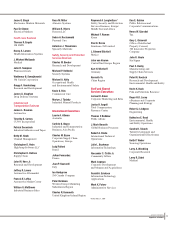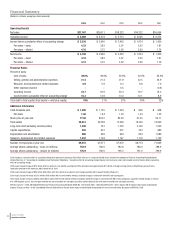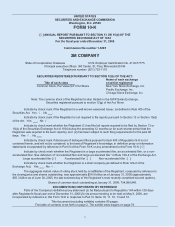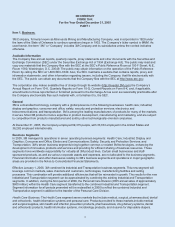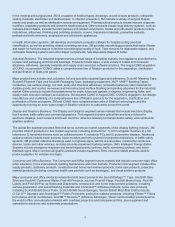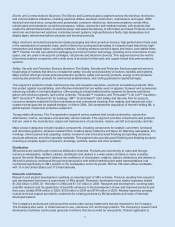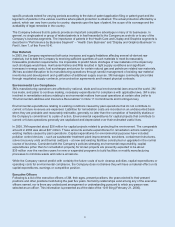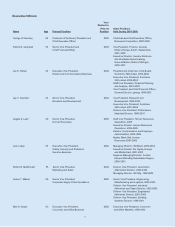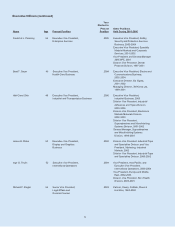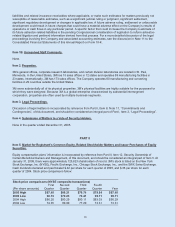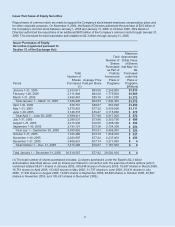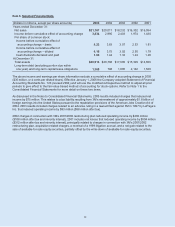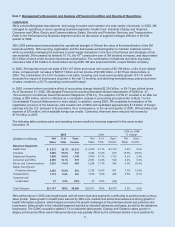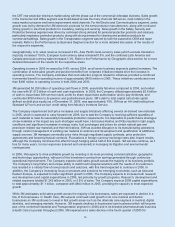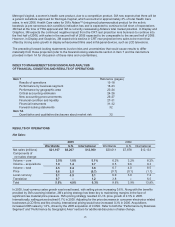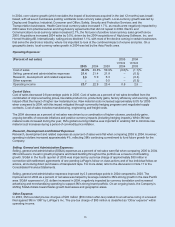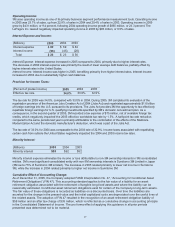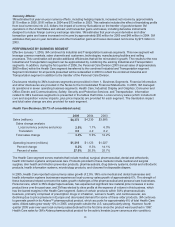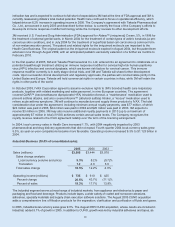3M 2005 Annual Report Download - page 35
Download and view the complete annual report
Please find page 35 of the 2005 3M annual report below. You can navigate through the pages in the report by either clicking on the pages listed below, or by using the keyword search tool below to find specific information within the annual report.
9
Item 1A. Risk Factors.
The most significant risk factors applicable to the Company are as follows:
* Results are impacted by the effects of, and changes in, worldwide economic conditions. The Company operates
in more than 60 countries and derives approximately 60% of its revenues from outside the United States. The
Company’s business may be affected by factors in the United States and other countries that are beyond its
control, such as downturns in economic activity in a specific country or region, or in the various industries in which
the Company operates; social, political or labor conditions in a specific country or region; or potential adverse
changes in tax in the jurisdictions in which the Company operates.
* The Company’s results are affected by competitive conditions and customer preferences. Demand for the
Company’s products, which impacts revenue and profit margins, is affected by (i) the development and timing of
introduction of competitive products; (ii) the Company’s response to downward pricing to stay competitive; (iii)
changes in customer order patterns, such as changes in the levels of inventory maintained by customers and the
timing of customer purchases which may be affected by announced price changes, changes in the Company’s
incentive programs, or the customer’s ability to achieve incentive goals ; and (iv) changes in customers’
preferences for our products, including changes in customer designs for their products that can affect the demand
for some of the Company’s products.
* Foreign currency exchange rates and fluctuations in those rates may affect the Company’s ability to realize
projected growth rates in its sales and earnings. Because the Company derives approximately 60% of its
revenues from outside the United States, its ability to realize projected growth rates in sales and earnings could be
adversely affected if the U.S. dollar strengthens significantly against foreign currencies.
* The Company’s growth objectives are largely dependent on the timing and market acceptance of its new product
offerings, including its ability to renew its pipeline of new products and to bring those products to market. This
ability may be adversely affected by difficulties or delays in product development, such as the inability to: identify
viable new products; obtain adequate intellectual property protection; gain market acceptance of new products; or
successfully complete clinical trials and obtain regulatory approvals. For example, new 3M pharmaceutical
products, like any pharmaceutical under development, face substantial risks and uncertainties in the process of
development and regulatory review. There are no guarantees that new products will prove to be commercially
successful.
* The Company’s future results are subject to fluctuations in the costs and availability of purchased components,
compounds, raw materials and energy, including oil and natural gas and their derivatives, due to shortages,
increased demand, supply interruptions, currency exchange risks, natural disasters and other factors. The
Company depends on various components, compounds, raw materials, and energy (including oil and natural gas
and their derivatives) supplied by others for the manufacturing of its products and it is possible that any of its
supplier relationships could be interrupted due to natural and other disasters and other events or terminated in the
future. Any sustained interruption in the Company’s receipt of adequate supplies could have a material adverse
effect on the Company. In addition, while the Company has a process to minimize volatility in component and
material pricing, no assurance can be given that the Company will be able to successfully manage price
fluctuations or that future price fluctuations or shortages will not have a material adverse effect on the Company.
* Acquisitions, strategic alliances, divestitures, and other unusual events resulting from portfolio management
actions and other evolving business strategies, and possible organizational restructuring could affect future
results. The Company monitors its business portfolio and organizational structure and has made and may
continue to make acquisitions, strategic alliances, divestitures and changes to its organizational structure. With
respect to acquisitions, future results will be affected by the Company’s ability to quickly integrate an acquired
business and obtain the anticipated synergies.
*The Company’s future results may be affected if the Company generates less productivity improvements than
estimated. The Company utilizes various tools, such as Six Sigma, to improve operational efficiency and
productivity. There can be no assurance that all of the estimated productivity improvements will be realized.
*The Company’s future results may be affected by various legal and regulatory proceedings, including those
involving product liability, antitrust, environmental or other matters. The outcome of these legal proceedings may
differ from the Company’s expectations because the outcomes of litigation, including regulatory matters, are often
difficult to reliably predict. Various factors or developments can lead the Company to change current estimates of


